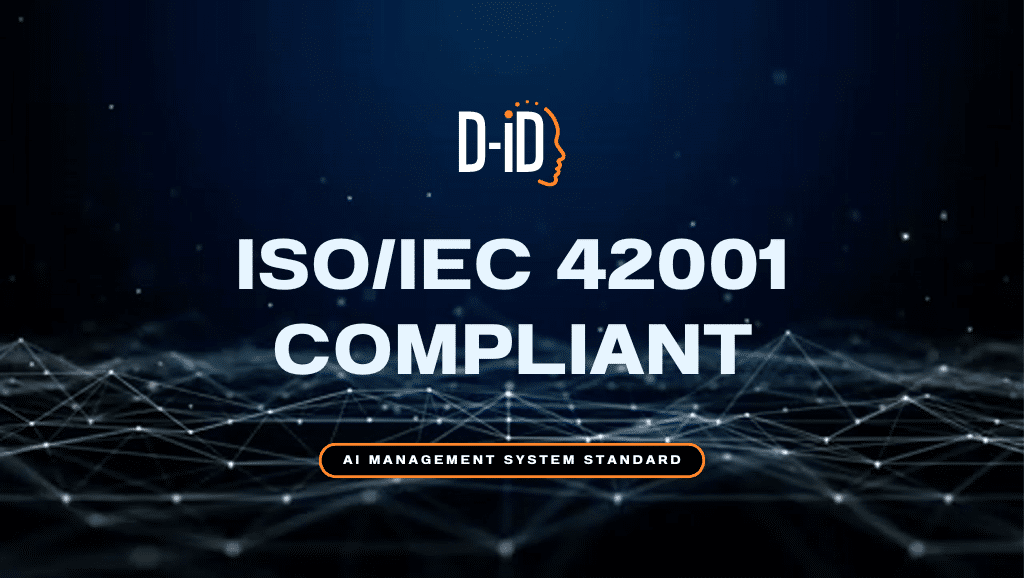Adopting Generative AI: Enterprises and Small Businesses Have Different Paths to Joining the Revolution

By Tomer Zuker, VP Marketing, D-ID
As generative AI continues to revolutionize our workplaces, understanding how its adoption differs between enterprises and small businesses (SMBs) is crucial. Both types of organizations can benefit significantly from AI, but the approaches, challenges, and opportunities can vary widely. Let’s delve into these differences and offer practical tips for successful AI adoption.
Different Needs and Approaches for Each
Enterprises – Navigating Complexity and Compliance
Enterprises often require AI for large-scale automation, enhancing customer service, and streamlining complex workflows. For instance, a multinational bank might use AI to improve fraud detection and customer interactions. Deploying AI in such environments involves integrating it into existing complex IT infrastructures. This process can be lengthy, requiring extensive planning and coordination. Additionally, enterprises must navigate complex regulatory environments and ensure compliance across multiple regions, such as GDPR and CCPA for financial institutions. The decision-making process in enterprises involves multiple stakeholders, including executives, IT, legal, and department heads. This often leads to the need for detailed business cases and ROI analyses.
Small Businesses – Simplicity and Speed
Small businesses typically have more specific and simpler needs. A local retailer might leverage AI to automate customer inquiries or personalize marketing efforts. Deployment for SMBs tends to be more straightforward, often using cloud-based solutions for quick integration. These businesses face lower initial costs, usually opting for subscription-based SaaS models, which make AI more accessible and affordable. SMBs also have fewer regulatory hurdles and a simpler organizational structure, allowing for quicker decision-making and implementation.
Key Differences in AI Adoption
Deployment
For enterprises, deploying AI involves integrating it into complex IT systems, which can be a lengthy process requiring extensive planning. In contrast, small businesses use cloud-based solutions for quick and easy deployment, often implementing them within days.
Cost
Enterprises face higher initial costs due to custom solutions and extensive integration efforts, but economies of scale can reduce costs over time. Small businesses, on the other hand, experience lower initial costs with subscription-based models, making AI both affordable and accessible.
Training
Enterprises require comprehensive training programs across multiple departments, involving ongoing support and workshops to ensure the effective use of AI tools. Small businesses, however, have more focused training that is limited to a few key users, making it quicker and less intensive.
Capacity
Enterprises have the capacity to process large volumes of data, enabling sophisticated AI applications. Small businesses, with their limited capacity, often rely on third-party services to handle data processing.
Regulations and Compliance
Enterprises must navigate complex regulatory environments and ensure compliance across different regions, such as GDPR and CCPA for financial institutions. Small businesses face fewer regulatory hurdles but still need to ensure basic compliance with relevant laws and regulations.
Tips for AI Adoption
For Enterprises
- Start Small and Scale Gradually: Begin with pilot projects to demonstrate value and build momentum for larger initiatives. This approach helps manage risk and gain organizational buy-in.
- Focus on Integration: Ensure that AI solutions seamlessly fit into existing systems to minimize disruption and maximize benefits.
- Invest in Training: Develop comprehensive programs to upskill employees, ensuring they can effectively use AI tools and adapt to new workflows.
For Small Businesses
- Leverage Cloud-Based Solutions: These solutions minimize initial costs and simplify deployment, allowing for quick implementation and scalability.
- Prioritize Specific Use Cases: Identify the areas where AI can have the most impact, such as customer service or marketing, and focus efforts there.
- Simplify Integration: Choose AI tools that easily integrate with current platforms to reduce complexity and speed up deployment.
Conclusion
By understanding the unique challenges and opportunities associated with AI adoption, enterprises and small businesses can strategically leverage generative AI to enhance their operations and drive growth. Whether you’re a multinational corporation or a local shop, AI’s potential benefits are vast and transformative. Embracing AI with a tailored approach can help organizations of all sizes innovate, improve efficiency, and deliver exceptional customer experiences.
Was this post useful?
Thank you for your feedback!


